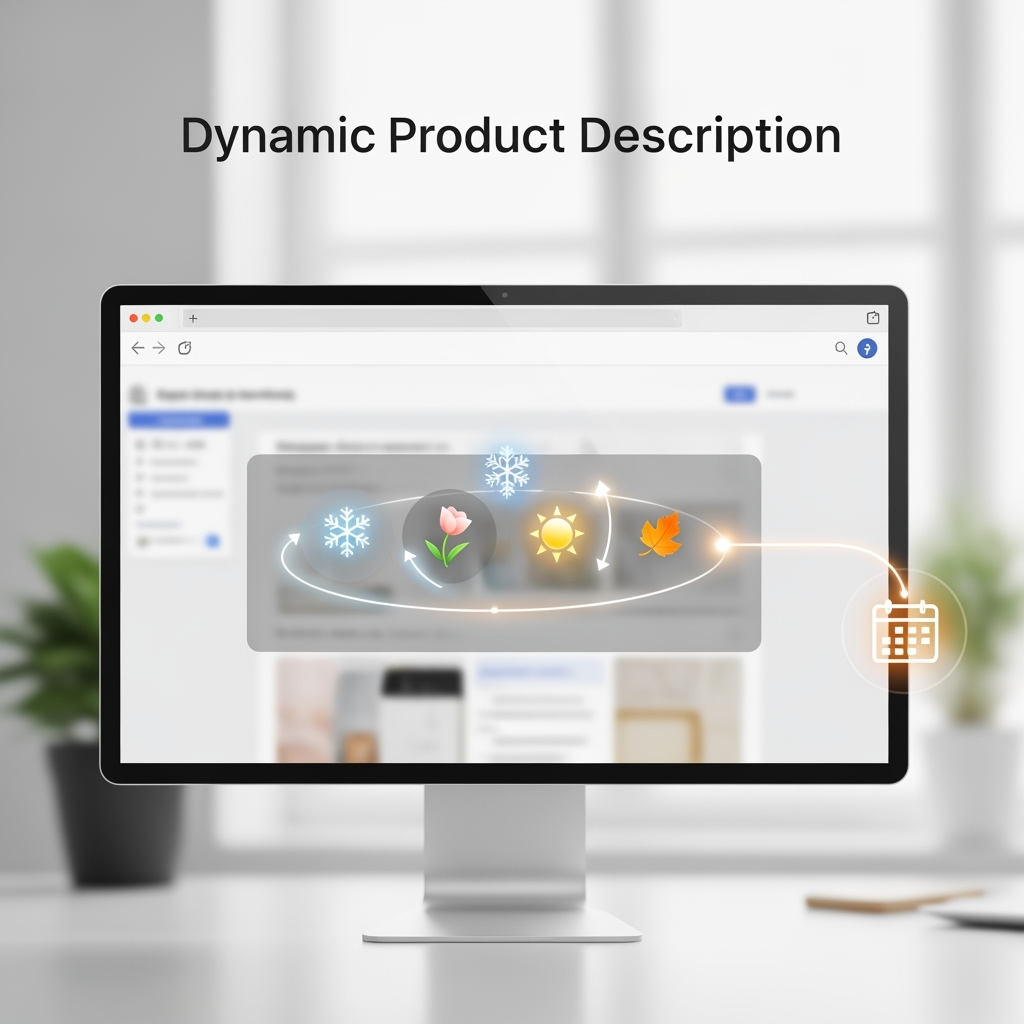CASE STUDIES: Real effects of long-tail SEO strategy
Introduction: Why are case studies important?
Marketing theories and promises are worth as much as they can prove in practice. That is why at ASEO we always base our actions on data and measurable effects. In this article, we present real case studies of companies from various industries that decided to implement an SEO strategy based on long tail phrases.
Each of the case studies below shows not only the end results, but also the exact process, challenges, and solutions that led to success. This will help you better understand how the long-tail approach can translate into tangible business results in your industry as well.
What will you learn from these case studies?
- What real business results can be achieved with the long tail strategy?
- How long does it take to achieve the first results in different industries?
- How the Long Tail Approach Can Reduce Customer Acquisition Costs (CAC)
- What specific actions contributed to the success
- What challenges arose during the implementation of the strategy and how were they overcome?
Case Study #1: Natural Cosmetics Store
Customer profile:
Online store offering natural cosmetics of its own production. The company had been on the market for 2 years, but despite good products and positive customer reviews, it struggled with low visibility in search results.
Challenge:
High competition in general cosmetic phrases. The client had previously focused on positioning for general phrases such as "natural cosmetics", "organic cosmetics", or "natural shampoo", spending significant resources on AdWords campaigns without proportional results.
Solution:
We conducted a detailed analysis of the market and user behavior, which showed that potential customers are often looking for very specific solutions to their problems. We implemented an SEO strategy based on long-tail phrases focused on:
- Specific ingredients (e.g. "shampoo with argan oil without sls")
- Specific skin needs (e.g. "cream for vascular skin with rosacea")
- Special uses (e.g. "natural cosmetics for pregnant women")
Identifying niches and long tail phrases
We conducted keyword research and competitive analysis, identifying over 450 long-tail phrases with combined potential greater than several generic phrases.
Reorganization of the site architecture
We've created a new category and subcategory structure based on user intent instead of just product types.
Creation of expert content
We have developed 25 comprehensive guide articles that answer specific user problems and questions.
Product card optimization
We have rewritten product descriptions to focus on specific benefits, ingredients, and uses.
Implementation of internal linking strategy
We have created a network of connections between content and products, strengthening the position on long-tail phrases.
Results after 6 months:
Key takeaway:
Focusing on long-tail keywords allowed us to avoid costly competition for highly competitive, generic keywords while reaching more engaged prospects. We saw that users who came in from long-tail keywords had a 2.8x higher conversion rate than those who came in from generic keywords.
Case Study #2: Local Construction Company
Customer profile:
A medium-sized construction company operating in Warsaw and the surrounding area, specializing in interior finishing and home renovations. The company had a stable position in the market, but wanted to increase the number of high-quality leads without drastically increasing its marketing budget.
Challenge:
The construction industry is characterized by very high competition for general phrases such as "renovation company Warsaw" or "interior finishing". The client had already spent significant amounts on Google Ads campaigns, but the quality of leads obtained in this way was unsatisfactory - many potential customers were looking for the cheapest solutions, while the company specialized in premium services.
Solution:
We conducted an analysis of user intent and identified gaps in the marketing communications of competitors. We developed an SEO strategy based on:
- Long tail of local phrases (e.g. "turnkey finishing of an apartment in Mokotów")
- Specific services (e.g. "replacement of electrical installations in old buildings")
- Dedicated subpages for each district with unique content
- Guide content that addresses specific renovation problems
Results after 4 months:
| Indicator | Before | After 4 months | Change |
|---|---|---|---|
| Number of leads per month | 22 | 63 | +186% |
| Lead to Customer Conversion Rate | 15% | 38% | +153% |
| Average order value | 15,200 PLN | 21,500 PLN | +41% |
| Cost of acquiring a lead | 420 PLN | 145 PLN | -65% |
| Visibility in search engines (number of keywords in TOP10) | 28 | 186 | +564% |
Key takeaway:
The long-tail strategy not only increased the number of leads, but drastically improved their quality. People who arrived at the site from long-tail phrases already had a specific need and were further along in the purchasing path, which translated into a higher lead-to-customer conversion rate and a higher average order value.
Case Study #3: Financial Blog
Customer profile:
A financial blog that earns money from affiliate marketing by recommending various financial products (loans, credit cards, savings accounts). Despite being online for several years, the blog had difficulty gaining traffic in the extremely competitive financial niche.
Challenge:
The financial industry is one of the most competitive in SEO, with very high costs per click for paid ads (often over PLN 10-15 per click). The blog owner was unable to compete with large financial portals for key phrases like "mortgage" or "credit card".
Solution:
Instead of fighting for the most expensive and competitive phrases, we identified hundreds of more specific queries that showed high conversion intent. We developed a comprehensive content marketing strategy based on:
- Very detailed articles that answer specific questions (e.g. "how to easily get a mortgage for a single person without a down payment")
- Answers to specific scenarios (e.g. "mortgage for people working abroad")
- Current comparisons of specific products (e.g. "Revolut vs Curve credit card in 2025")
- Calculators and tools that increased user engagement
Results after 8 months:
Before implementing a long tail strategy:
- Monthly visitors: 12,800
- Affiliate link click rate: 2.2%
- Conversion rate: 0.8%
- Monthly affiliate income: PLN 3,400
- Positions in TOP10: 34 keywords
After 8 months of long tail strategy:
- Monthly visitors: 47,200 (+269%)
- Affiliate link click rate: 6.7% (+204%)
- Conversion Rate: 3.2% (+300%)
- Monthly affiliate income: PLN 28,900 (+750%)
- TOP10 positions: 342 keywords (+906%)
Key success factors:
In this case, the key to success was identifying very specific issues and questions that users had about financial products that they couldn’t find comprehensive answers to online. By creating in-depth expert content that answered these questions, the blog became a recognizable source of specialized knowledge, which directly translated into increased trust and conversion rates.
Universal conclusions from case studies
By analyzing all the presented cases and dozens of other projects that we have completed in recent years, we can draw several universal conclusions regarding the effectiveness of long tail strategies:
- Higher purchase intent. Across all projects, we have noticed that traffic from long-tail phrases is characterized by significantly higher quality and purchase intent than traffic from general phrases.
- Lower cost of acquisition. Competition for long-tail phrases is much lower, which translates into lower customer acquisition costs - both for organic SEO and paid campaigns.
- Faster results. While the battle for popular, general phrases can take many months or even years, high positions for long-tail phrases can be achieved much faster, often within 2-3 months.
- The cumulative effect. The sum of traffic from many long-tail phrases often exceeds the potential traffic from several general phrases, while ensuring that the quality of that traffic is higher.
- Resistance to algorithm changes. Our observations show that pages positioned for long-tail phrases are less susceptible to fluctuations during Google algorithm updates.
For which companies does the long tail strategy work best?
Based on our case studies, we can say that a long-tail SEO strategy is particularly effective for:
- New websites and businesses - which cannot immediately compete with market leaders for key phrases
- Companies with a limited marketing budget - who need maximum ROI for every invested zloty
- Businesses focused on quality leads, not quantity - who prefer fewer, but better-tailored leads
- Highly competitive markets - where fighting for keywords is extremely expensive
- Companies with niche products/services - which can reach their target group through very specific queries
How to implement a long tail strategy in your business?
Implementing an effective long-tail keyword strategy requires a systematic approach:
Conduct detailed keyword analysis
Identify long tail keywords related to your business that have low competition but high purchase intent. Use tools like Ahrefs, SEMrush, or AnswerThePublic.
Explore user intent
For each phrase, define the exact intent of the searcher - informational, navigational or transactional. This will help you match the content to real needs.
Create the right website architecture
Plan your site structure so that different groups of long-tail phrases have their own dedicated sections, categories, or subpages.
Create valuable content
For each group of phrases, prepare in-depth, expert content that comprehensively answers users' questions and needs.
Implement an internal linking strategy
Link related content in a way that strengthens rankings for targeted long-tail phrases and helps users navigate.
Monitor and optimize
Regularly monitor results, identify the best converting phrases and optimize your strategy based on the collected data.
Ready to increase your SEO effectiveness?
Want to implement a long-tail strategy that will bring real business results? Our experts will conduct a detailed analysis of your industry, competition and potential, and then develop and implement a personalized SEO strategy that will increase your revenue.
ORDER A FREE SEO AUDIT



